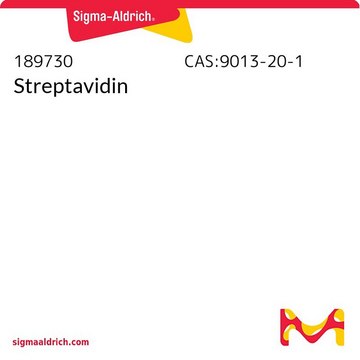870273C
Avanti
18:1 Biotinyl Cap PE
Avanti Research™ - A Croda Brand 870273C
Synonym(s):
1,2-dioleoyl-sn-glycero-3-phosphoethanolamine-N-(cap biotinyl) (sodium salt)
About This Item
Recommended Products
form
liquid
packaging
pkg of 1 × 2.5 mL (870273C-25mg)
pkg of 2 × 4 mL (870273C-200mg)
manufacturer/tradename
Avanti Research™ - A Croda Brand 870273C
concentration
10 mg/mL (870273C-25mg)
25 mg/mL (870273C-200mg)
shipped in
dry ice
storage temp.
−20°C
SMILES string
[H][C@@](COP([O-])(OCCNC(CCCCCNC(CCCC[C@](SC[C@@]1(NC(N2)=O)[H])([C@]12[H])[H])=O)=O)=O)(OC(CCCCCCC/C=C\CCCCCCCC)=O)COC(CCCCCCC/C=C\CCCCCCCC)=O.[Na+]
InChI
1S/C57H103N4O11PS.Na/c1-3-5-7-9-11-13-15-17-19-21-23-25-27-29-33-41-54(64)69-46-49(72-55(65)42-34-30-28-26-24-22-20-18-16-14-12-10-8-6-4-2)47-71-73(67,68)70-45-44-59-53(63)39-32-31-37-43-58-52(62)40-36-35-38-51-56-50(48-74-51)60-57(66)61-56;/h17-20,49-51,56H,3-16,21-48H2,1-2H3,(H,58,62)(H,59,63)(H,67,68)(H2,60,61,66);/q;+1/p-1/b19-17-,20-18-;/t49-,50+,51+,56+;/m1./s1
InChI key
VQSGNVZURNOPBT-XEAQQBNDSA-M
General description
Application
Packaging
Legal Information
also commonly purchased with this product
signalword
Danger
Hazard Classifications
Acute Tox. 3 Inhalation - Acute Tox. 4 Oral - Carc. 2 - Eye Irrit. 2 - Repr. 2 - Skin Irrit. 2 - STOT RE 1 Oral - STOT SE 3
target_organs
Central nervous system, Liver,Kidney
Storage Class
6.1D - Non-combustible acute toxic Cat.3 / toxic hazardous materials or hazardous materials causing chronic effects
wgk_germany
WGK 3
flash_point_f
Not applicable
flash_point_c
Not applicable
Choose from one of the most recent versions:
Certificates of Analysis (COA)
It looks like we've run into a problem, but you can still download Certificates of Analysis from our Documents section.
If you need assistance, please contact Customer Support.
Already Own This Product?
Find documentation for the products that you have recently purchased in the Document Library.
Our team of scientists has experience in all areas of research including Life Science, Material Science, Chemical Synthesis, Chromatography, Analytical and many others.
Contact Technical Service


